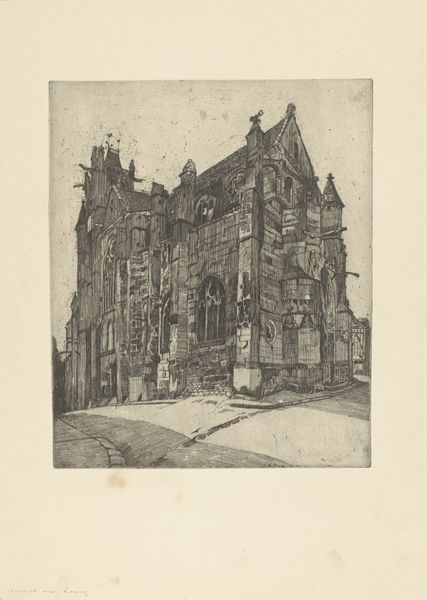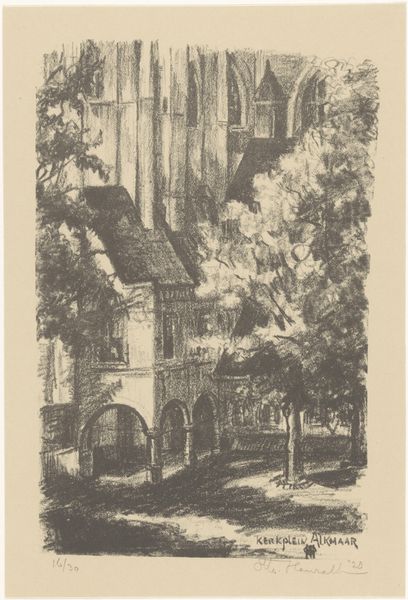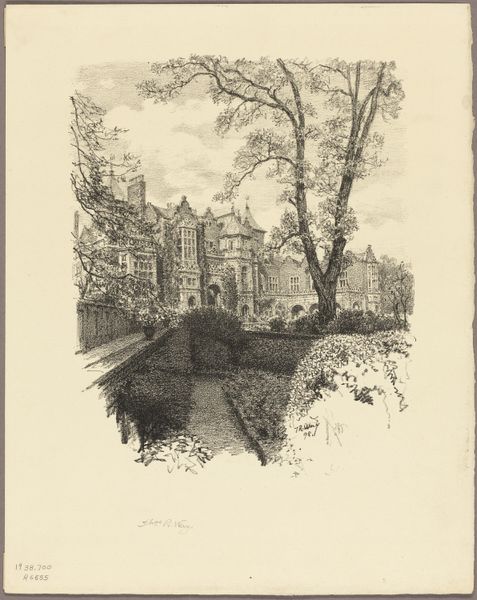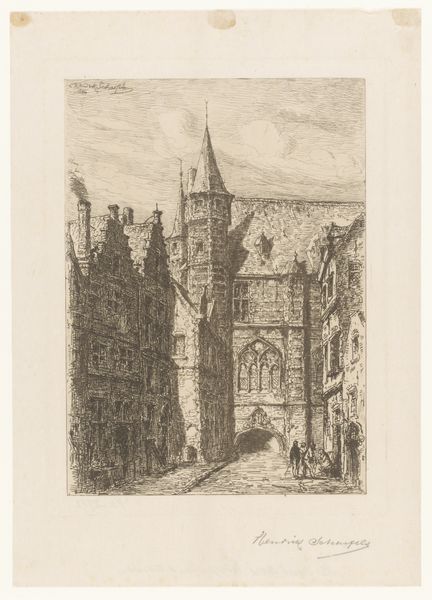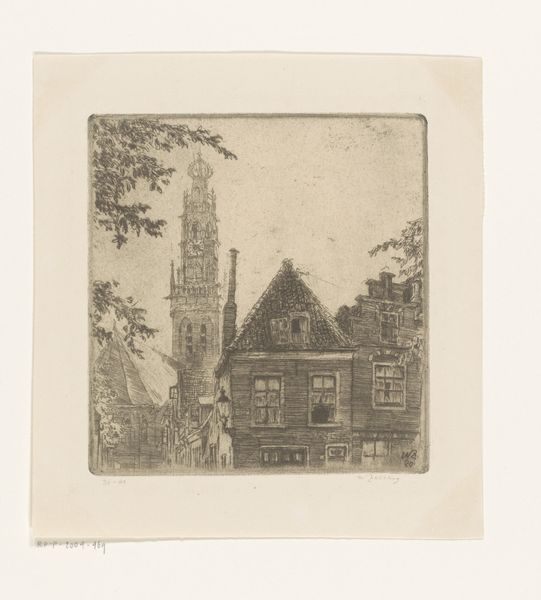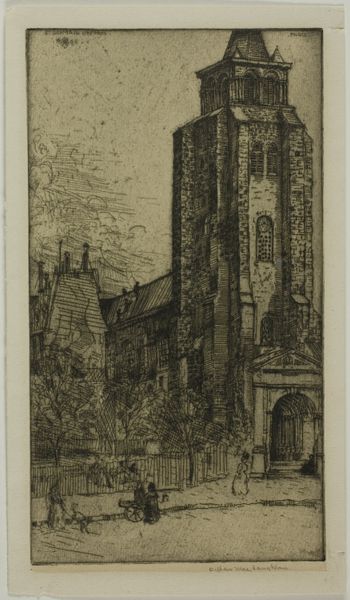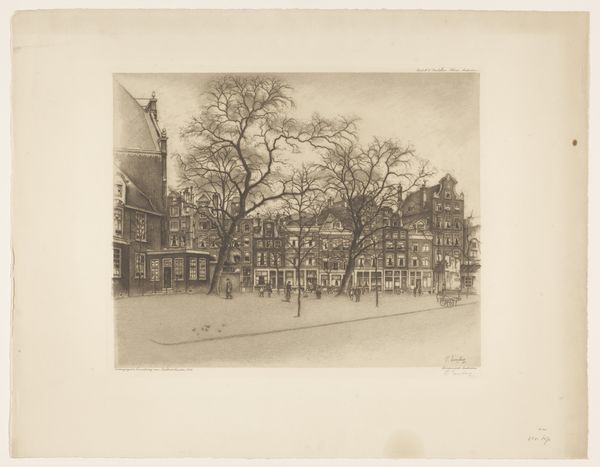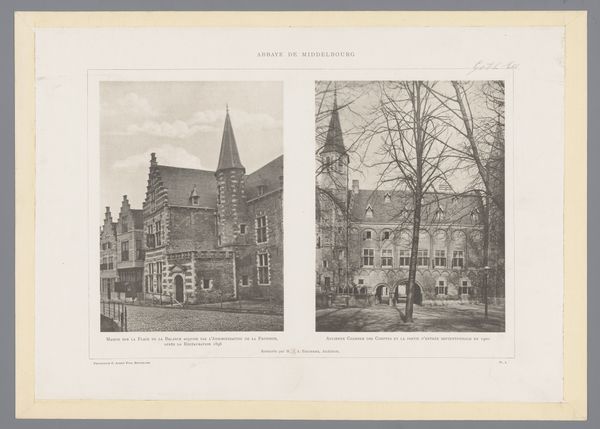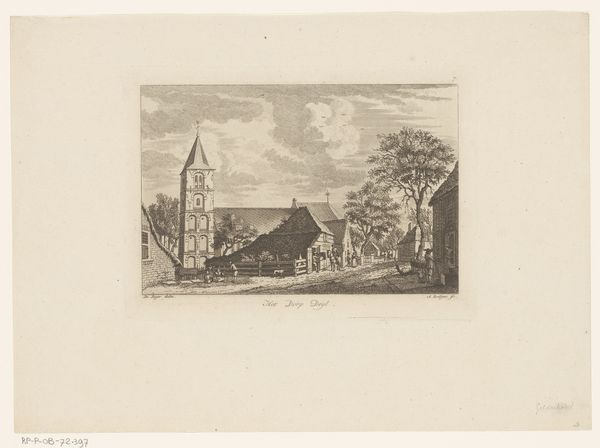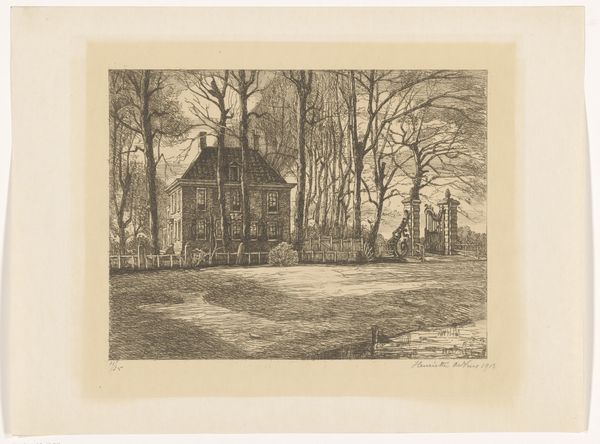
drawing, print, etching
#
drawing
#
16_19th-century
#
dutch-golden-age
# print
#
etching
#
pencil sketch
#
landscape
#
cityscape
#
genre-painting
#
realism
Dimensions: height 412 mm, width 306 mm
Copyright: Rijks Museum: Open Domain
Editor: So, this is "Mensen voor Marktkerk te Hamelen" by Cornelis Springer, created in 1877. It's a print, an etching, and gives the feeling of a pencil sketch all in one! I'm immediately struck by how it captures this bustling town square, almost like a freeze-frame from daily life. What historical context informs our reading of this particular piece? Curator: This work exemplifies the 19th-century Dutch interest in chronicling their urban environment, and how ideas of the public space were changing during the period. Springer capitalizes on the growing availability of print media to disseminate images of Dutch cities – a sort of visual branding, if you will, that promoted civic pride and perhaps even tourism. Have you considered how the print medium itself impacts our understanding? Editor: That’s fascinating! I hadn’t thought about it that way. The fact that it’s a print means it could be widely distributed. Did this contribute to a particular view of Dutch life? Curator: Exactly. Consider how the seemingly objective representation of architecture and everyday people actually reinforces particular societal norms and values. It showcases a specific, idealized vision of urban life and civic order. Think about the implied message here. What behaviors and values do you think are being silently encouraged or showcased? Editor: Hmm, perhaps a sense of community, respect for historical buildings, and a somewhat staged portrayal of middle-class life. This depiction leaves out aspects such as poverty or any form of social tension. So it presents a harmonious, idealized reality, right? Curator: Precisely. The print is as much about what it includes as what it strategically omits. In doing so, the image participates in creating the narrative of progress, propriety, and an inherent understanding of place. How interesting that, seemingly depicting a candid reality, Springer might very well have been subtly orchestrating a perception of a city. Editor: This makes me rethink the role of art and how even seemingly straightforward scenes can shape broader perceptions and narratives. Thank you. Curator: Indeed, and reflecting on this, my understanding has also deepened—it underlines how potent artworks, particularly those widely disseminated through printmaking, are as carriers and shapers of socio-cultural meanings.
Comments
No comments
Be the first to comment and join the conversation on the ultimate creative platform.
